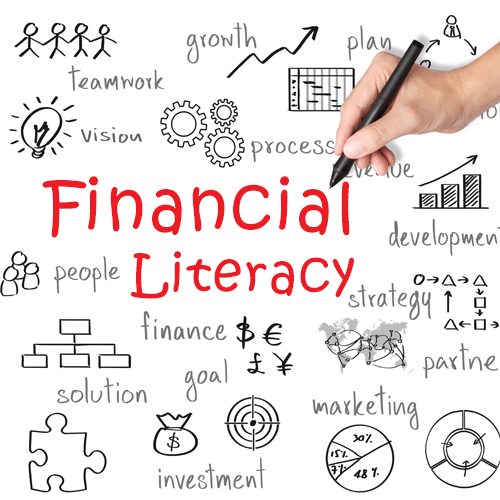Few matters in life are regarded, by many, as less relevant than planning for the distribution of estate, or in other words accumulated assets. More so in a country like India where, family legacy can be passed on from father to son and their sons without much tax incidence, and seldom does it require an eye of the expert for distribution among family members. But this scenario is changing fast with more and more families building wealth along with complex family bonds it becomes increasingly difficult for the wealthy to leave a legacy without conflict.
For many families wealth distribution or the estate dissolution takes place within the lifetime of the main owners. Though, same is not the case with every family, some very famous incidents have occurred in some of the wealthiest families clearly highlighting the issue of “Lack of proper Estate Planning” and how quickly a family dispute can spiral into a very public one.
Estate Life Cycle
Just as every asset has a lifecycle, every human being has a lifecycle and so does the estate. In some cases it may stretch to many generations, while in some, it may simply be the case of one generation building other enjoying, but regardless of how many generations the Estate lasts, its life-cycle plays an important role in decision of planning, distribution and continuation of estate.

Figure 2.1: Estate Life-Cycle |
To understand the importance of various steps in the life-cycle we must relate those steps to the real life situations of a person involved into this venture. By understanding the reason behind each stage of estate life-cycle we can understand the factors at work in the minds of our clients and the fears, the decision affecting premonitions and why and how would they actually achieve a peaceful resolution, when it comes to their estate being passed to the next stage.
For example: A first generation entrepreneur, building a startup business is not actually thinking or worrying about preservation of that business venture. But only sometime later, when the business itself has moved from the very high growth rate to a moderate growth rate would he/she be actually concern on how to preserve it and then pass it on.
Whereas, a family business owner, who received a venture already established and only require to sustain it, will certainly be worried about the last two stages of:
- Preservation, and Distribution;
With more focus on the latter.
Why to Accumulate Assets?
The need for asset accumulation is the birthplace of the need for estate planning. Therefore, by understanding the reasons behind asset accumulation behavior we can pinpoint the real need of the planning. So, why assets are accumulated? Or, why anyone should accumulate assets throughout life? Given below are some of the common reasons:
A. Income security
One of major reasons and followed by almost everyone. We accumulate assets out of savings for rainy days in future, or for achievement of bigger goals or retirement whichever is your goal, generating additional source of income is an important goal of every family. Following life goals may be considered while targeting income security by individuals and families:
- Retirement
- Kids’ education
- Vacation
- House purchase etc.
These are some goals necessary for every family to prepare for, and some of the goals actually ensure additional income for the family; i.e. house purchase and retirement plans.
B. Better Lifestyle
This goal can be called a part of the income security efforts but due to its static nature we can look at it under a separate lens. Lifestyle expenses are usually met out of regular income of the family/ individual, but some of these expenses may require a bigger outlay, for example: purchase of a car, is one such goal, which may require some amount of savings to go into. Similarly an international vacation may be one of the major wish of the family requiring some amount of savings.
But, are these savings really assets? Perhaps not, the nature of assets divides the lifestyle asset from income generating assets. For Example:
- “Purchase of a car,” which may be akin to building a short term asset, with limited utility of five to eight years.
- But “purchase of a vacation home,” could be a long term asset, which may even be converted to generate additional income, and thus contribute to the income security of the family as well.
C. Financial Security for next generation
You may ask how it can be different from the objectives mentioned above. To a great extent it is not, but considering the involvement of next generation this objective is very different from the previous two, how? Take for example the following case:
- “Vijay and Kirti are parents to their two kids who are minor, school going children. Considering that it’ll take at least 7 years for one of them to become major and another 3 – 4 years in starting to become financially independent, the parents carry the responsibility to provide not only for their sustenance but also for their education and any medical needs they may face.”
- Now consider purchase of a real estate property for income security purpose at Rs. 45 Lakh. Supposing the rent to price ratio is 5% p.a. family will increase their income by Rs. 2.25 Lakh p.a. “What happens if the kids are left to look after the property and themselves all by themselves?”
- The better solution for the family would have been to build sufficient financial assets, which are easier to handle, instead of major real assets, which will be difficult to handle or dispose off in stress scenario.
Therefore, different kinds of assets are required when we are building for the needs of the next generation. Insurance for example could be one.
D. For higher purpose/calling
With the advent of information technology and ease of execution, many of us are now able to follow our hobbies and areas of interest, which may not be directly related to income generation. Some of these areas even require substantial investment in the first place. Some of the hobbies:
- Photography
- Mountaineering
- Running a school
- Social welfare
- Pilgrimage
- Long distance travel etc.
The list can go on and on, but one thing may remain common and that is all of these most of the times are not related to the profession of the individual. Therefore, before launching themselves fulltime into such adventures, we must ensure that the financial needs do not pose a hurdle on the way. Also family and dependents remain provided for while we pursue our hobbies. Sufficient assets will ensure that for you and enable you to continue on your path unhindered.
So we can see the importance of investments and assets in our lives through these objectives, and also what happens when we remove them from the scene or from some family.
- Deserving dependents may have to start from scratch
- Dependents may have to cut down on lifestyle substantially
- Children’s financial future prospects may be jeopardized
- Loved ones may be forced to fend for themselves
- Business/Enterprise may be lost to creditors and distress sale
- That higher calling may have to wait for another day
How Assets are lost?
Asset transfer is one of the major reasons of loss of assets. 27% of the time assets are lost while in transfer to the next generation. Some of these assets take fairly long time to build , so one fact is clear, that by addressing:
- The lack of discipline in asset use and wealth preservation
- Wealth Plan &
- Estate Transfer
We shall be able to reduce our chances of asset loss by 65% which is substantial, and moving further a good wealth plan itself will address the issue of health care and job loss, therefore completely filling up any gaps in asset preservation.
Estate transfer issues will not be completely taken care of by a wealth plan but certainly it forms the first building blocks of a good estate plan. The first ingredients in an estate plan are provided by a good wealth plan by organizing and bringing all assets and their characteristics at one place.
Why to Plan Estate Transfer?
Ensuing family feuds provide harsh enough reason for everyone with sufficient assets to embrace planning for its distribution or disposal in the unfortunate event of their death. But that may not be all. Here are five reasons why estate planning becomes important for everyone who owns substantial assets, or plans for the same:
1. Avoiding Family Disputes:
One of the most important reasons of all, this may be the reason for majority of asset holders out there, to keep family members and loved ones fighting over the leftover assets. Also this one reason has a huge impact on how the assets are to be distributed and there affects the planning directly or in other words is affected by the estate planning directly.
The first question a testator must answer to himself or the planner is that, whether there is a possibility of family expectations and what happens if those expectations are not met? Answering this one question may require much more bonding and clearer understanding of family interconnections and personalities but it also marks a turning point in the plan, when answered accurately.
Though, it will never be really accurate to answer of classify each one of the family members in such manner, but certainly all we need is to reduce the room for conflict, and the rest will be taken care of.
2. Survival of dependents:
Perhaps one of the greatest reasons why estate planning and small steps to ensure wealth transfer to right beneficiaries are just as important as building assets itself. As we have seen under the reasons for asset accumulation one of the reasons is to provide for the better lifestyle and more income security for the dependents, without proper planning transfer of the assets may be expensive and tedious process. Meaning much of the assets may be lost in the process or they may lose their value; for example: distress sale of business stake.
More than that, dependents may include those for whom it’ll be very difficult to survive in absence of external financial support, like children, handicapped relatives, old parents etc. For such dependents it may not even be possible to do rounds and take the effort of claiming most assets their benefactor may have left them, or worked hard to accumulate.
3. Survival and Continuation of Business/Enterprise:
Though this one argument may not be applicable to salaried individuals, but if they acquire stake in some business or enterprise this will also apply to them. Usually, many people including – employees, customers, creditors depend on the enterprise for their financial survival and growth, and thus, every business owner has this important responsibility to prepare for contingencies and pass on the ownership in a manner that ensures smooth transition of business to new owners and its continuation.
A proper estate plan will ensure the baton of ownership is passed unhindered and without much damage to the confidence of the three stakeholders in the enterprise as discussed above.
4. Continuation of Causes/Charities etc.:
With the financial security comes the freedom of will, and with freedom of will comes the desire to act on those higher callings in life, assisting others achieve greatness, promoting social welfare or fighting for a neglected yet important cause. People with substantial financial assets and good financial security are the ones often greatly active in their social lives and helping others overcome their difficulties. If you are one of such people, you would not want your cause to be forgotten after your demise, lack of estate planning might just do that. Therefore, once such causes are undertaken, ensuring their preservation also becomes equally important.
A good planning and forethought will not only allow your all important cause to continue, but may also bring many other likeminded activists along, expanding it multifold.
5. Preserve Family Legacy:
Family legacy is one of the factors which could be really rare and so precious. But like other causes and assets it’ll not protect itself from being lost, overtaken or forgotten by the generations unless it is allowed, through proper planning and guidance to grow and continue to benefit those it intends to, that may sometimes involve general public as well.
In modern times such concerns are taken up by business families, who have built substantial fortunes for themselves and need to forward the values and the enterprise to the next generation, especially in our country where most great businesses are family owned. The continuation of business is not the only challenge faced by businesses, but the continuation of the whole vision of the business which gives impetus to that effort. This will not just required careful planning for succession but also matching of family objectives with that of the enterprise, and further planning to continue the same for many generations to come.
6. Taxation & Transfer Costs:
Cost of transfer of estate is another major factor one should look out for while transferring the estate. Under Indian tax laws gifts and estate transfer to own children may attract least taxation but when it has to be done to minors and daughter-in-laws one should be careful of clubbing provisions. Other than that timely and proper planning may avoid distress sale of assets which diminishes their value.
Therefore, depending on the magnitude of assets a person has, the priority might change from preservation to growth, to transfer, and within transfer whether to simply plan for changing hands or for a foundation, can be a matter of concern for various classes of individuals and families with ownership of small or large estates. But one thing remains common among all, that the estate must serve the purpose of the family and the next generations to come after all that is why it was built in the first place.












